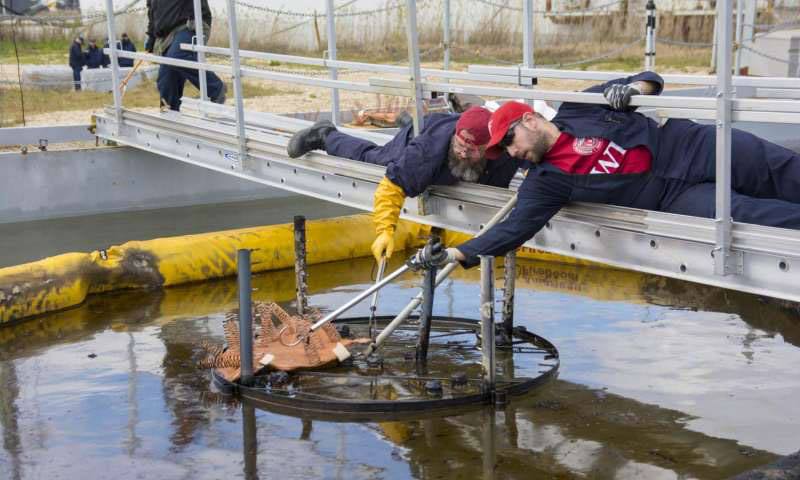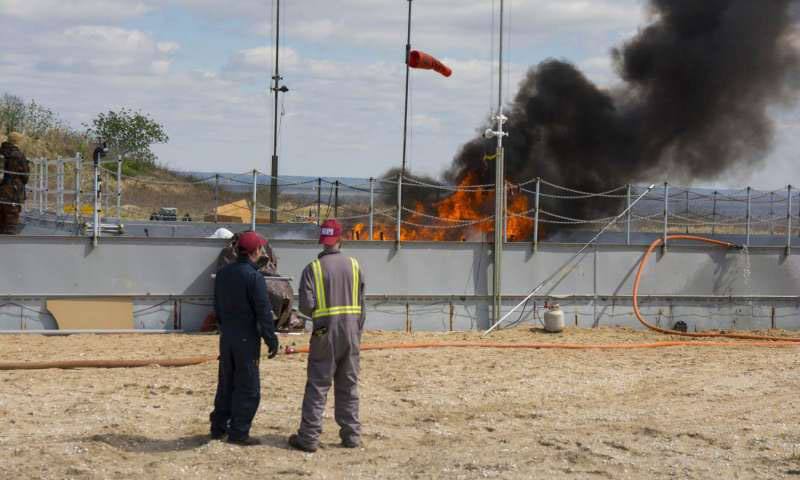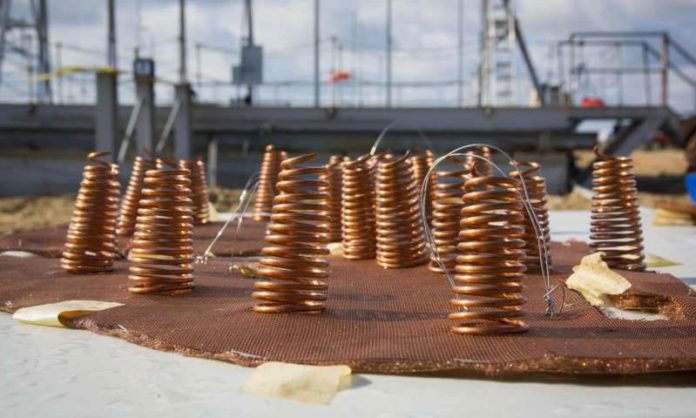The fire protection engineering researchers at Worcester Polytechnic Institute (WPI) in collaboration with researchers at Worcester Polytechnic Institute (WPI) have developed a novel technology that can greatly accelerate the combustion of crude oil floating on water. They have developed an oil spill cleanup technology that also called as Flame Refluxer. It holds the potential of becoming an effective tool for minimizing the environmental impact of future oil spills.
This novel oil spill cleanup technology burn the spilled oil quickly during producing low levels of air pollutants. It consists of metal coils attached to a blanket made from copper wool sandwiched between two layers of copper mesh. The blanket is placed on top of floating oil that collects a boom towed by boats. After the ignition of oil, the coils and blanket transmit heat from the flames that superheat the oil. It causes an increment in its burning rate and efficiency. As a result, the oil burns more completely. A complete combustion produces fewer airborne emissions and any solid residue. And they are captured by the copper wool and kept out of the water column.
Research led, professor Ali Rangwala said, “The technology is so simple, it has no moving parts, it’s inexpensive, and it significantly enhances the burning rate of oil. The tests we conducted at this unique facility will allow us to advance the technology closer to actual deployment.”

Scientists tested the prototype of this oil spill cleanup technology during between March 13 and March 17. The test involved controlled burns of oil in a specially designed test tank on the island. Scientists used a larger prototype, a circular blanket nearly 1.5 meters across with up to 48 metal coils attached. Oil was pumped to the test apparatus to maintain the oil layer at about one centimeter (0.4 inches) throughout each 10-20 minute test burn.
During the experiment with or without Flame Refluxer, scientists noted a number of parameters. For example, temperatures, the flow rate, and the oil burning rate. An air sampling station collected emissions produced by the fire and continuously measured several combustion byproducts: carbon dioxide, carbon monoxide, nitrogen dioxide, sulfur dioxide, and particulate matter (PM2.5 and PM10). The copper blanket was weighed before and after each test to see how effectively it trapped residue from the oil fires.
Karen Stone, oil spill response engineer at BSEE said, “In-situ burning has been used with great success, and it is our goal to support research that makes a good method even better. This research and the results of the tests are particularly exciting. We saw hotter fires increase the amount of oil that was consumed, what appears to be cleaner emissions and a significant reduction in burn residue after the burn. Initially, we were hopeful that the technology could capture any remaining residue after the burn, but the fires burned so efficiently there was very little to collect.”

When oil is spilled in open water, burning it in place (called in-situ burning) can be an effective method for removing the oil before it can settle into the water column and cause ecological harm. In fact, the current research project is based, in part, on the experience of the 2010 Deepwater Horizon disaster, during which more than 400 controlled burns removed between 220,000 and 310,000 barrels of oil from the ocean’s surface.
According to Scott Fields of the USCG Research and Development Center “in-situ burning is already a very successful process. But we want to improve the air quality for our first responders who are engaged in oil spill cleanup technology.”
